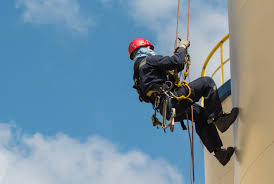When can someone work at height?
What does it mean to be “competent”, according to the Health and Safety Executive?
The Oxford Dictionary defines “competent” as the ability, knowledge or skill required to perform something successfully.

On their website, the HSE offers a few more details from a legal standpoint about the regulations:
If you are training someone, make sure they are under the supervision and guidance of someone who is competent. For information on PASMA Courses, contact https://globalflt.com/services/pasma-courses
For low-risk and short duration ladder tasks, the only requirement for competence may be to ensure that employees are given the proper training on how to safely use the ladder (e.g. how to secure it properly). The majority of training takes place on-the-job, not in a class.
Existing training and certification schemes developed by industry and trade associations can help to demonstrate competency when a higher level of technical competence is needed, such as drawing up a detailed plan for the assembly of a complex scaffold.

Why fall protection training is essential
Fall protection training is essential to prevent accidents in the workplace. In the UK, falls are the leading cause of workplace accidents and deaths. Training ensures workers are able to identify hazards, correctly use equipment, and adhere to safety procedures in order to minimise risk. Employers can protect their employees and create a safer environment by investing in fall protection training.
Understanding Fall Hazards
Fall hazards are different in each industry. Workers in construction may be exposed to unguarded edges and ladders. For manufacturing or maintenance, elevated platforms and roofs could pose a risk. The first step to reducing these hazards is identifying them. To avoid accidents, workers must be aware of specific risks that are associated with their jobs.
